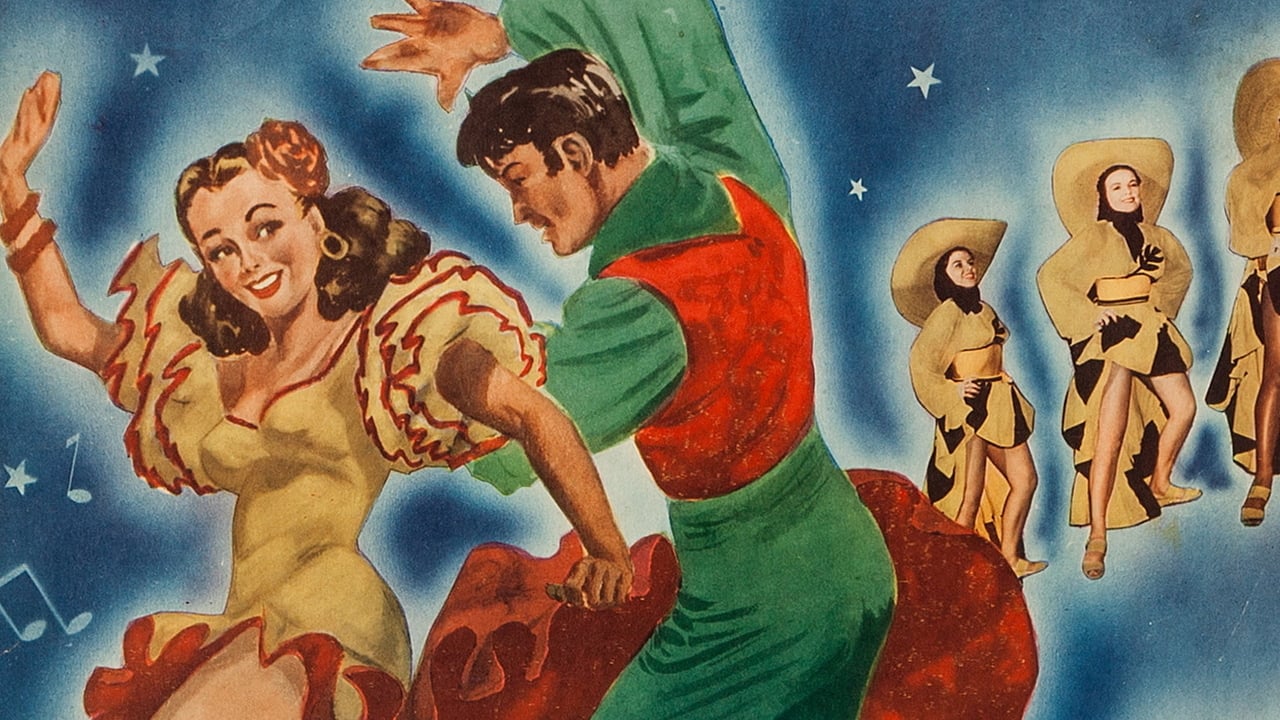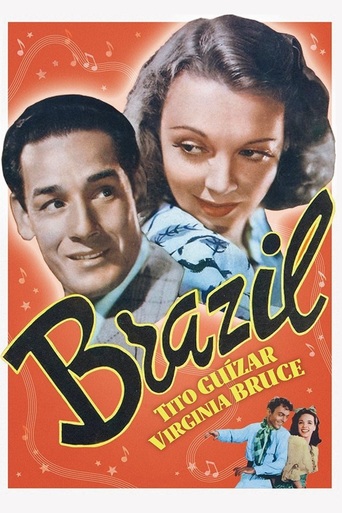

Republic studio's attempt to produce an A musical at the height of world war 2 when MGM's reign dominated the genre, while 20th Century Fox was cherishing their domination over the Latin world in producing colorful spectacles with song. It's the story that hurts this one, not to mention the eternal stereotype of the happy Hispanic, the non- stop fiesta world and abundance of colorful characters in all age groups. It might have been a good will gesture, but it did a disservice in not taking them seriously, especially in a time that the world was turning miserably upside down.Veteran actress Virginia Bruce plays an American author visiting Rio who expects to learn all she can about thus huge paradise as she believes in a very short span of time. She hires Tito Guizar as her guide, thinking he's just a struggling street singer, unaware that he's a popular night club performer. Guuzar further complicates things by pretending to be two people, performing for her as his real identity, all the while romancing her under the guise of the struggling guide and street singer. One of the highlights is a tram ride past the statue of Christ the Redeemer, built more than a decade before, and equally profound in black and white as it is in color. Mixing in specialty numbers along with the Mexican born Guizar's songs, this includes the Oscar nominated "Rio De Ginaro". Edward Everett Horton provides amusing comic relief as the teller of tall tales while trying to break up Bruce and Guizar, even going as far as telling her a vicious lie about him. Robert Livingston, Republic picture's forgotten leading man, plays an American suitor of Bruce's obviously jealous of Guizar and Bruce's relationship. A cameo from Roy Rogers is really nothing but a waste of credit space, even though he does sing one song. However, a lavish carnival sequence makes up for flaws, even though it screams for color.
... View MoreI wonder if the award-winning song really was called "Rio de Janeiro." According to my resource book on the Academy Awards, the song "Brazil" from this movie was the Academy Award winner for "Best Song" category in 1944.I checked with sheetmusicplus.com and could not find a song called "Rio de Janeiro." If there is such a song in print, I would like to know about it as I love Latin music.I agree this film should have been in color. Maybe Ted Turner can colorize it for us. Also, I should like to see it available on DVD soon.As for Edward Everett Horton being in the film, I believe he appeared in other films set in South America in this era. No doubt the interest in Latin America expressed through movies in the 1940s and television in the 1950s was because of South American oil the United States and Canada bought for military use during World War II and during the industrial expansion and prosperity that followed the war. If you think about it, you can see the political undertones in the films of this era.
... View MoreBrazil has some entertaining musical and dance numbers that are worth a look. Tito Guizar is an impressive singer, but as an actor he personifies the word: bland. The only real spark in this film is Virginia Bruce. She has a wonderful screen presence. She's animated, and emotionally on cue as an actress in every scene she's in. Too bad she didn't get to sing -- she's a distinctive and likable vocalist (she introduced the song "I've Got You Under My Skin" in 1936). Bob Livingston would have been a better choice for her love interest -- he is far more charismatic than Guizar. The first fifteen minutes are impressive as they introduce authoress Virginia, who's American book "Why Marry A Latin?" has caused a furor among Latin men. Along comes Guizar, who at one point becomes twin brothers, which is two too many Guizars for one movie.
... View More